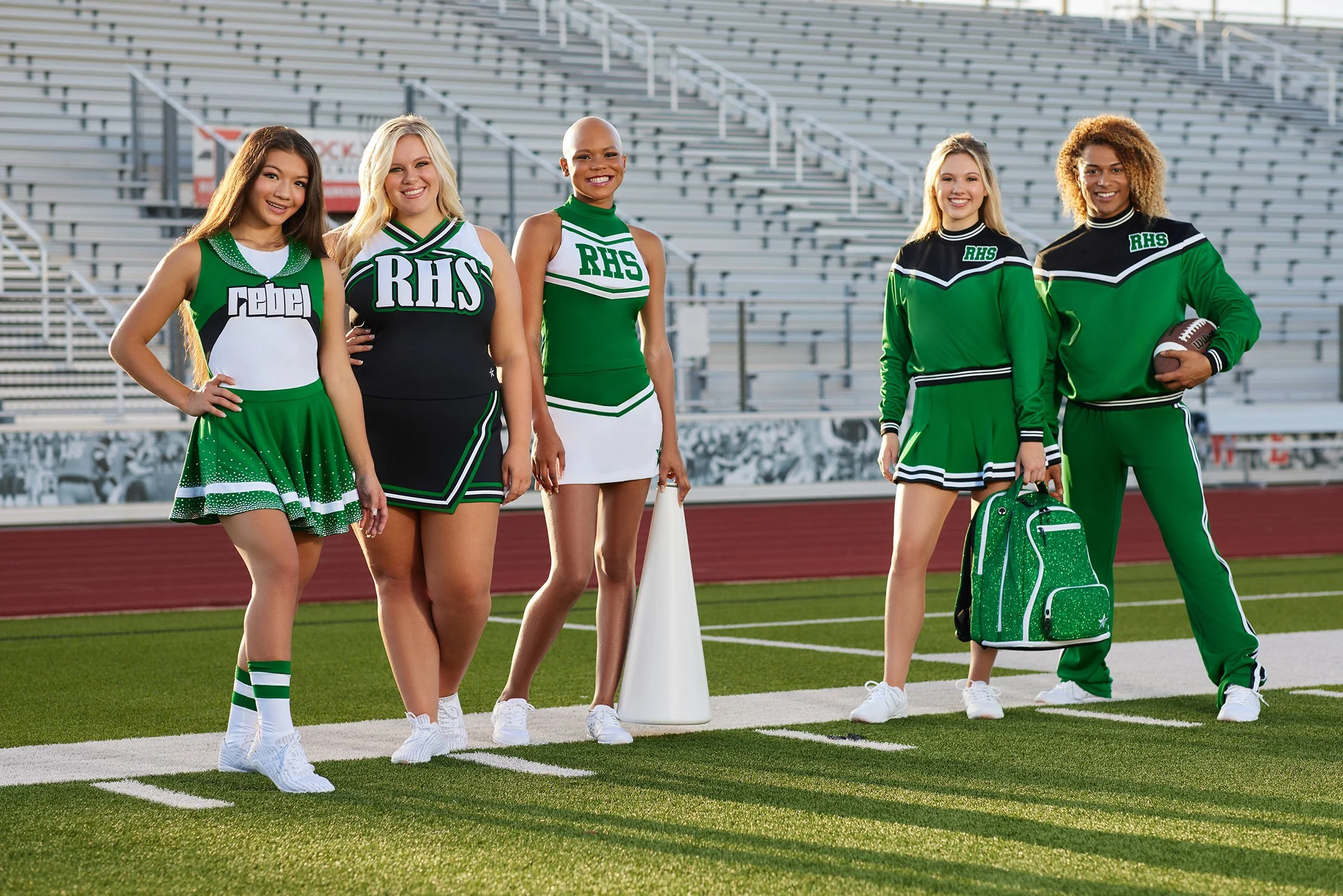
Who Can Be a Cheerleader?
Let’s start with the good news: cheerleading is more inclusive than ever. Teams exist at every level—from elementary to college, rec to elite, sideline to competition.
FAQ: Is 14 too old to start cheerleading?
Not at all. Many athletes start cheering in high school or later. If you’ve got spirit and are willing to train, you can cheer.
Cheerleading isn't just for the flexible or fearless—it's a sport built on teamwork, dedication, and the right preparation. Whether you’re outfitting a high school squad, coaching a youth team, or stepping into cheer for the first time, here’s what you need to know about cheerleading requirements, both physical and practical.
What It Takes to Cheer: Requirements, Age, Fitness & FAQs
Physical Requirements to Be a Cheerleader
There’s no one-size-fits-all body type for cheer—but depending on your role (flyer, base, tumbler), certain physical traits can help. Here’s what most programs look for:
Strength & Core Stability: Crucial for stunting (both flyers and bases).
Flexibility: Important for jumps, tumbling, and range of motion in routines.
Cardiovascular Endurance: You’ll be moving non-stop during performances.
Body Control: Balance, coordination, and spatial awareness are key.
FAQ: What are the physical requirements for cheerleading?
Strength, flexibility, and stamina matter most. Skills can be trained—but attitude and effort are the biggest requirements.
FAQ: What is the weight limit to be a cheerleader?
There is no official weight limit. Teams are based on skills, roles, and safety—not size. Many programs are actively fighting outdated body stereotypes.
What Are the Requirements for High School Cheer?
Every school has slightly different guidelines, but most programs require:
Minimum GPA: You may need to meet academic eligibility to participate.
Tryouts: These usually involve jumps, a short dance, a cheer, and possibly stunting.
Practice Commitment: Many squads practice 2–4 times a week year-round.
Uniform Compliance: Your team must wear school-approved designs that meet coverage and fit policies.
FAQ: What are the requirements to be a cheerleader in high school?
You'll likely need to try out, keep your grades up, attend practices, and follow school rules on uniforms and behavior.

Uniform Requirements: What You Need to Know
Uniform rules vary between sideline and competition squads, but here are the most common regulations:
Coverage: Many school programs require full-length tops or crop tops worn over conversion pieces.
Fit: Uniforms must allow full range of motion but shouldn’t be overly tight or revealing.
Team Consistency: Everyone must match—no personalized alterations.
Safety: Avoid embellishments or loose accessories that could interfere with stunts.
FAQ: What are the requirements for cheer uniforms?
They must comply with school dress codes, provide freedom of movement, and ensure team cohesion and safety.
What Are Level 5 Cheer Requirements?
In All Star cheerleading, Level 5 is an advanced competitive tier. Requirements include:
Elite stunting skills (extended one-legged stunts, full twisting transitions)
Tumbling passes with layouts or fulls
High-level pyramids and tosses
A strong foundation in Level 4 skills
FAQ: What are the Level 5 requirements for cheerleading?
Level 5 athletes must be able to execute advanced tumbling, elite stunts, and perform at peak endurance under competition pressure.
Cheer Is a Sport. Period.
No matter your age, background, or experience level—if you want to cheer, there’s a place for you. The physical requirements can be trained. The mindset? That’s what makes a cheerleader.
Ready to Outfit Your Team?
Once you’ve got the squad, we’ll help you gear them up—from uniforms to warm-ups and everything in between.



